Transfer of aversive respondent elicitation in accordance with equivalence relations
- PMID: 20119523
- PMCID: PMC2707136
- DOI: 10.1901/jeab.2009.92-85
Transfer of aversive respondent elicitation in accordance with equivalence relations
Abstract
The present study investigates the transfer of aversively conditioned respondent elicitation through equivalence classes, using skin conductance as the measure of conditioning. The first experiment is an attempt to replicate Experiment 1 in Dougher, Augustson, Markham, Greenway, and Wulfert (1994), with different temporal parameters in the aversive conditioning procedure employed. Match-to-sample procedures were used to teach 17 participants two 4-member equivalence classes. Then, one member of one class was paired with electric shock and one member of the other class was presented without shock. The remaining stimuli from each class were presented in transfer tests. Unlike the findings in the original study, transfer of conditioning was not achieved. In Experiment 2, similar procedures were used with 30 participants, although several modifications were introduced (formation of five-member classes, direct conditioning with several elements of each class, random sequences of stimulus presentation in transfer tests, reversal in aversive conditioning contingencies). More than 80% of participants who had shown differential conditioning also showed the transfer of function effect. Moreover, this effect was replicated within subjects for 3 participants. This is the first demonstration of the transfer of aversive respondent elicitation through stimulus equivalence classes with the presentation of transfer test trials in random order. The latter prevents the possibility that transfer effects are an artefact of transfer test presentation order.
Keywords: aversive conditioning; derived stimulus relations; fear; humans; skin conductance; stimulus equivalence; transfer and transformation of function.
Figures
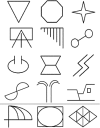
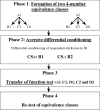
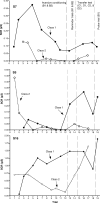
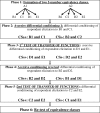
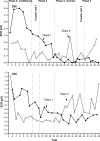
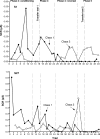
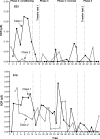

Similar articles
-
On the role of covarying functions in stimulus class formation and transfer of function.J Exp Anal Behav. 2002 Nov;78(3):509-25. doi: 10.1901/jeab.2002.78-509. J Exp Anal Behav. 2002. PMID: 12507017 Free PMC article.
-
The transfer of respondent eliciting and extinction functions through stimulus equivalence classes.J Exp Anal Behav. 1994 Nov;62(3):331-51. doi: 10.1901/jeab.1994.62-331. J Exp Anal Behav. 1994. PMID: 16812745 Free PMC article.
-
Transfer of conditioned fear and avoidance: Concurrent measurement of arousal and operant responding.J Exp Anal Behav. 2021 Jan;115(1):204-223. doi: 10.1002/jeab.646. Epub 2020 Dec 3. J Exp Anal Behav. 2021. PMID: 33270247
-
Tonic and phasic electrodermal measures of human aversive conditioning with long duration stimuli.Psychophysiology. 1992 Nov;29(6):621-32. doi: 10.1111/j.1469-8986.1992.tb02037.x. Psychophysiology. 1992. PMID: 1461953
-
A Review of Backward Higher-Order Conditioning: Implications for a Pavlovian Conditioning Analysis of Stimulus Equivalence.Perspect Behav Sci. 2023 Jul 20;46(3-4):493-514. doi: 10.1007/s40614-023-00385-y. eCollection 2023 Dec. Perspect Behav Sci. 2023. PMID: 38144547 Free PMC article. Review.
Cited by
-
Derived generalization of attentional bias for laboratory-induced threat: Yes but.Front Psychol. 2022 Dec 15;13:1004157. doi: 10.3389/fpsyg.2022.1004157. eCollection 2022. Front Psychol. 2022. PMID: 36591065 Free PMC article.
-
Relations between Description and Experimentation in the Metacontingency Enterprise: An Interbehavioral Analysis.Perspect Behav Sci. 2021 May 19;44(2-3):417-472. doi: 10.1007/s40614-021-00286-y. eCollection 2021 Sep. Perspect Behav Sci. 2021. PMID: 34632284 Free PMC article.
-
Words putting pain in motion: the generalization of pain-related fear within an artificial stimulus category.Front Psychol. 2015 Apr 30;6:520. doi: 10.3389/fpsyg.2015.00520. eCollection 2015. Front Psychol. 2015. PMID: 25983704 Free PMC article.
-
Generalization of human fear acquisition and extinction within a novel arbitrary stimulus category.PLoS One. 2014 May 5;9(5):e96569. doi: 10.1371/journal.pone.0096569. eCollection 2014. PLoS One. 2014. PMID: 24798047 Free PMC article.
-
Environmental cues can indirectly acquire cocaine-eliciting changes in Heart Rate: A pilot study of derived relational responding, the transfer of function among cocaine users.Psychol Rec. 2023 Sep;73(3):481-500. doi: 10.1007/s40732-023-00554-0. Epub 2023 Sep 19. Psychol Rec. 2023. PMID: 39006304 Free PMC article.
References
-
- Augustson E.M, Dougher M.J. The transfer of avoidance evoking functions through stimulus equivalence classes. Journal of Behavior Therapy and Experimental Psychiatry. 1997;28:181–197. - PubMed
-
- Augustson E.M, Dougher M.J, Markham M.R. Emergence of conditional stimulus relations and transfer of respondent eliciting functions among compound stimuli. The Psychological Record. 2000;50:745–770.
-
- Barlow D.H. Anxiety and its disorders: The nature and treatment of anxiety and panic (2nd ed.) New York: Guilford Press; 2002.
-
- Barnes-Holmes D, Hayes S.C, Dymond S, O'Hora D. Multiple stimulus relations and the transformation of stimulus functions. In: Hayes S.C, Barnes-Holmes D, Roche B, editors. Relational Frame Theory: A post-Skinnerian approach to human language and cognition. New York: Kluwer; 2001. pp. 51–72. In.
-
- Blackledge J.T. Functional contextual processes in posttraumatic stress. International Journal of Psychology and Psychological Therapy. 2004;4:443–467.
Publication types
MeSH terms
LinkOut - more resources
Full Text Sources

